In the last lecture, we have learned the importance and application direction of single cell sequencing . The reason why single-cell sequencing is becoming more and more popular is largely due to the continuous improvement of single-cell separation technology. In this talk, we will review the traditional single-cell separation technology with you, and focus on the new micro-microchip technology and microfluidic technology of single-cell separation technology. Figure 1 shows the current common single cell separation device. Figure 1: Current common single cell separation equipment Traditional single cell separation technique I believe many experimenters have seen the traditional single cell separation equipment we will introduce below. Traditional single cell separation methods include: oral pipette technique, micromanipulation, laser microdissection, and flow cytometry. Using the mouth pipette technology, the operator can select cells with better morphology under the microscope, and there is almost no damage to the cells. Therefore, the success rate of the downstream experiment is very high, but the operator's proficiency is high, as shown in Fig. 2. Figure 2: Single cell collection under the microscope Manual separation of single cells is time consuming and labor intensive. The invention of the micromanipulator frees the human hand, making the whole operation process simpler and more controllable. Using a micromanipulator, see Figure 3, the operator can achieve single cell acquisition either manually or automatically. Compared with a mouth pipette, microsurgery has the advantage of being able to accurately control the extraction and release of single cells by the instrument, thus reducing the technical requirements of the operator himself. Figure 3: Eppendorf Micromanipulator Using a laser microdisc, see Figure 4, the operator can cut a single cell or cell population in the tissue for research, avoiding the "contamination" of the interstitial cells and some inflammatory cells, and can know the location information of the cells. However, adjacent cells in the method are easily contaminated, and in the process of tissue fixation and laser cutting, the integrity of the cells may be destroyed, and the nucleic acid damage to the cells is large, thereby affecting the subsequent amplification of the genetic material. Figure 4: ArcturusXT TM Laser Microdissection Flow cytometry, the principle shown in Figure 5, can detect the scattered light and fluorescence of the single cells wrapped in the sheath fluid. The sorting type flow cytometer causes the liquid stream to form droplets by applying ultra-high speed vibration to the sheath liquid, and instantaneously charges. The charged droplets encapsulating a single cell are deflected by a high voltage electric field and enter the collection device to achieve cell separation. Flow cytometry technology can well sort large numbers of cells and complex samples, and can achieve high precision and large throughput (96 or 384). However, the flow mechanical shear force is relatively large, affecting cell activity, and requires a large number of cells, which is not suitable for some projects that cannot obtain a sufficient number of cells. Figure 5: Flow cell sorting principle The above traditional single-cell separation technique can help researchers obtain individual cells, but not simultaneously. The need for an operator to perform subsequent lysis, amplification, and database construction of cells isolated into a single PCR tube still requires cumbersome procedures. Therefore, we will focus on the new high-throughput single-cell separation technology-micropore chip technology and microfluidic technology. New high-throughput single cell separation technology At present, the new high-throughput single-cell separation technology mainly includes micro-hole chip technology and micro-fluidic technology. Microporous chip technology refers to the technique of separating single cells in a cell suspension into micropores by gravity, fluid, electric field, etc. by making a micropore array having a pore diameter slightly larger than the cell diameter. Figure 6: ICELL8 TM Single-Cell System Imaging Analysis Alex K. Shalek et al. developed a portable single-cell separation technique for single-cell RNA sequencing quickly and cost-effectively. They designed a nanopore array that captures individual cells, as shown in Figure 7, and captures RNA fragments with bar coded magnetic beads. High-throughput sorting of single cells is achieved with the need for a pipette. The Seq-well process is capable of capturing and analyzing 10 to 15% of RNA transcripts per sequence. Figure 7: Seq-well (Nature Methods 14, 395–398 (2017)) Microfluidic technology refers to the technology of accurately controlling microliter and milliliter samples through micron-level flow channels. At present, there are mainly micro-reaction chambers and droplet technology. Microfluidic technology has great advantages in cell sorting applications. It can use gravity centrifugation, fluid mechanics, electric field force, etc. to capture cells. It can also combine various operating units to collect cell capture, cell culture, cell lysis and Subsequent detection and analysis in one, to achieve high throughput, automation, and integration. Microchamber Among the commercial products that use fluid technology for single cell sorting are Fluidigm's C1 single cell automated preparation system (Figure 8). Based on Fluidigm's innovative microfluidic technology, the system applies cell samples from solution to the C1 TM microfluidic chip, rapidly and automatically separates 96 or 384 single cells and dispenses them into a single preparation chamber; , RNA reverse transcription and pre-amplification. Figure 8: Fluidigm's C1 single cell automated preparation system Droplet technology Figure 9: Droplet technology (Proc Natl Acad Sci US A. 2009 Aug 25; 106(34): 14195–14200.) The droplet technique (Fig. 9) is an aqueous solution and an oil phase that flow out of different microchannels and fuse to form a "water-in-oil" emulsion droplet. The droplet technique is applied to a single cell separation technique in which a single cell, a reagent, and the like are coated by a droplet generating device to form a water-in-oil micro-reaction system in an oil droplet. The current market representative products are mainly Chromium TM Controller of 10x Genome (see Figure 10) and ddSEQ Single-Cell Isolator by Illumina and Bio-Rad. These two-cell separation instruments have a similar degree of similarity in design principles, and can form millions of droplets in a few minutes, which can simultaneously separate and expand tens of thousands of cells, because each cell carries a different molecular label. Differentiating, the subsequent process can allow a large number of cells to be simultaneously expanded in one reaction system, so the flux is large and the amount of reagents consumed is low, and the cost of each single cell is low, which becomes the star product of the current single-cell transcriptome research. . Figure 10: 10x Genome Chromium TM Controller Conclusion I believe that everyone has a preliminary understanding of single cell separation technology, and finally we have a summary of the current single cell separation technology. The single cell separation technique is summarized as follows: The technology we have As an institution that has been at the forefront of high-throughput sequencing research, Huada has accumulated rich experience in single-cell separation for many years. Now has suction method including oral, micromanipulation, microdissection, flow separation, ICELL8, isolated single cells Chromium TM plurality of low, high throughput platform separation and subsequent amplification building a database corresponding solutions. references [1] Hou, Y., Song, L., Zhu, P., Zhang, B., Tao, Y., Xu, X., Li, F., Wu, K., Liang, J., Shao, D., et al. (2012). Single-cell exome sequencing and monoclonal evolution of a JAK2-negative myeloproliferative neoplasm. Cell. 148, 873-885. FACE Mask used for dental field Dental Face Mask,Black Dental Face Mask,Dental Face Masks For Sale,Dental Dam Face Mask Zhejiang Lanhine Medical Products Ltd. , https://www.lanheyiliao.com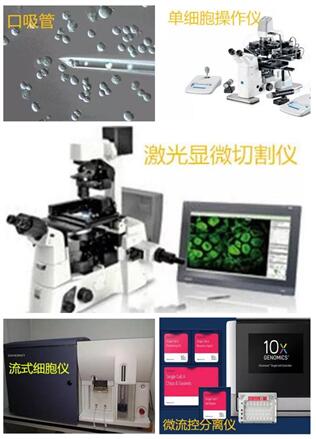
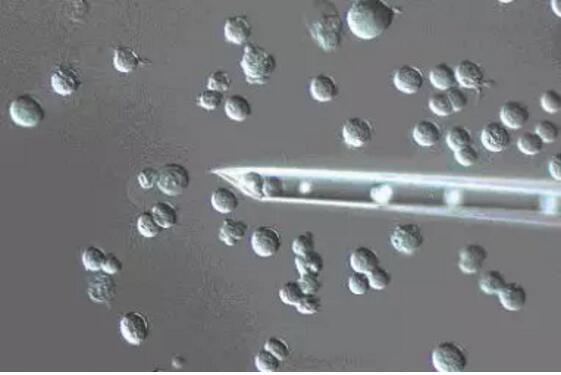
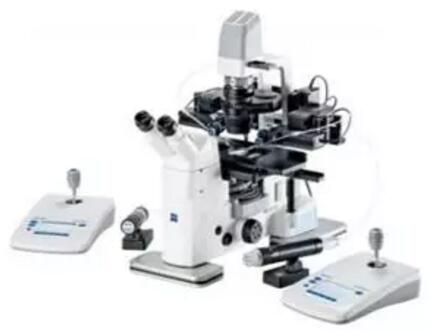

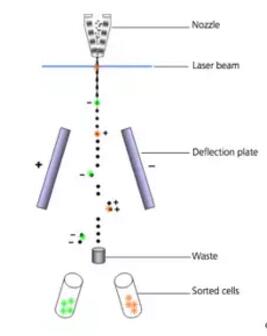
WaferGen Biosystems, currently affiliated with Takara Bio, launched the ICELL8 TM Single-Cell System (Figure 6) in 2014. The MultiSample NanoDispenser (MSND) enables accurate dispensing of 5,184 microwells on ICELL8 chips. An image of each microwell can be obtained in the imaging stage, and a single cell is automatically selected for subsequent experiments in conjunction with the dedicated software CellSelect. 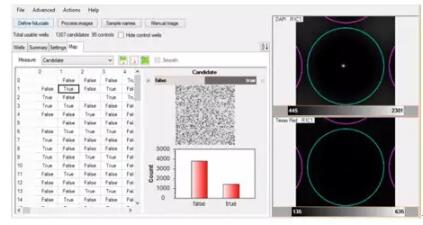

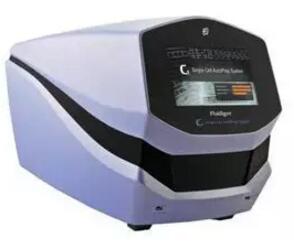

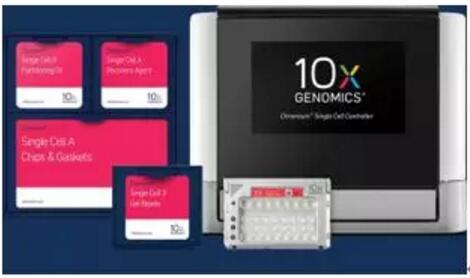

[2] Macosko, Evan, Basu, Anindita, Satija, & Rahul, et al. (2015). Highly parallel genome-wide expression profiling of individual cells using nanoliter droplets. Cell, 161(5), 1202-14.
[3] Todd M Gierahn, Marc H Wadsworth II, Travis K Hughes, et al. Seq-Well: portable, low-cost RNA sequencing of single cells at high throughput. Nature Methods 14, 395–398 (2017)
Single cell separation technology